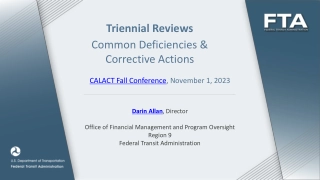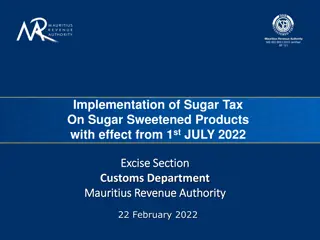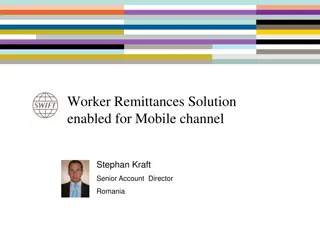Revolutionizing Financial Education: Common Cents Solution
Revolutionize financial education with Common Cents, a service bridging parents and children through a 3rd-party intermediary platform. Children learn responsible financial behavior while parents track spending habits, test results, and educate themselves. The service operates by allowing parents to open accounts for their children, issue linked debit cards, and release funds upon completion of lesson plans. Initially free, Common Cents may charge a low percentage as a service fee in the future. Behavioral principles, such as curbing suboptimal spending behaviors and addressing biases in spending decisions, guide the platform to help families take charge of their finances.
Download Presentation

Please find below an Image/Link to download the presentation.
The content on the website is provided AS IS for your information and personal use only. It may not be sold, licensed, or shared on other websites without obtaining consent from the author.If you encounter any issues during the download, it is possible that the publisher has removed the file from their server.
You are allowed to download the files provided on this website for personal or commercial use, subject to the condition that they are used lawfully. All files are the property of their respective owners.
The content on the website is provided AS IS for your information and personal use only. It may not be sold, licensed, or shared on other websites without obtaining consent from the author.
E N D
Presentation Transcript
COMMON CENTS Sasha Ban, Ali Kermani, Erin Poulson, Dan Shaffer
Problem with the Status Quo Parents are not getting anything for their money Children are learning poor financial behavior Credit Card companies prey on young adults
Our Solution: Common Cents 3rd party intermediary service between parents & children Debit account Financial (or other) education service Flexible test & withdraw schedule for students
How Common Cents works: Step 1: Parent opens account for child with some amount of money Step 2: Common Cents issues child a debit card linked to their Common Cents account Step 3: Child logs onto their Common Cents account via our website & complete lesson plans to release funds onto debit card Step 4: Parent & child can track spending habits, view test results, & learn responsible financial behavior
Show Me the Money Initially we will offer the service for free and make our money on the float (interest on the unclaimed money we re holding) Once sufficient demand exists, we may opt to charge a low percentage as a service fee
Behavioral Principles Suboptimal spending behaviors Falling victim to heuristics & biases in spending decisions People spend too much & borrow too much Downfalls of credit card spending Permanent income hypothesis (people spend what they expect they will eventually have) Help temper the urge for immediate gratification, mental accounting, lack of budgeting, and innumeracy that draws many people into debt Goal: transfer financial decision making from the intuitive to the deliberative self
Behavioral Principles Anchoring *****by letting them know how little money they are getting*** Inertia? For the parents, to customize choice overload Ease of evaluation Familiarity bias debit card style?
Intuitive vs. Deliberative Self Cognitive / Deliberative Intuitive / Affective Relatively slow Relatively fast Demanding of cognitive capacity Undemanding of cognitive capacity Controlled Automatic Analytic Holistic Rule-based Associative Sources: Stanovich and West (2002) 9
Debt Aversion 10 Average 4 yr student loan debt is only $16,700 26% of low income students and 31% of Asians don t even apply Some people tend to pay off low rate loans faster than required, even when there are better investment opportunities available Sources: Burdman (2005), Cadena, et al (2006)
Excessive Debt 11 Debt / income ratio closely linked with anxiety Average credit card debt increased 300% (in households with at least one card) between 1990 and 2002 WHY? Sources: Dretna (2000), Money Central at www.msn.com























